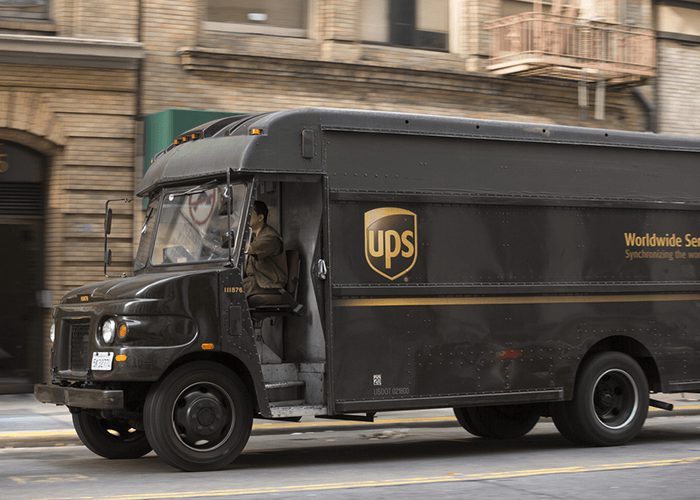UPS plans to put collision-avoidance technology on 5,700 trucks

UPS announced on Tuesday that they will equip more than 60% of their truck fleet with collision-avoidance technology.
An estimated 5,700 trucks, out of their total 11,000 trucks, will have this collision technology installed. UPS told DC Velocity, “the technology could help its big rigs avoid accidents by alerting drivers to moving and stationary objects in front of the tractor, as well as moving objects surrounding the vehicle.”
The technology will alert the driver of possible collision in their blind-spot and as they change from lane to lane. Further, electronic stability control and forward-collision warning with automatic brake application will be included.
“As truck drivers, we all know the right side of our vehicle is our largest blind spot. Now we have technology that watches this every second of the day. Initially, I thought the blind spot alarms would be an annoyance, but now that I’ve driven with this technology I’ve become a believer,” said John McKown, UPS Freight driver and American Trucking Association’s America’s Road Team Captain from East Berlin, Penn. “Words can’t describe how much I appreciate UPS’s commitment to safety and investing in this technology. It gives me goosebumps.”
Although the collision-avoidance system will alert the driver of danger, the driver will still have full control over their truck. UPS said the “driver assistance technologies” are meant to complement standard safe driving practices, not replace them.
“UPS has some of the safest drivers on the road, and some of our best drivers have told us that collision mitigation systems help make them even better drivers,” said Carlton Rose, president of global fleet maintenance and engineering for UPS. “This investment is indicative of UPS’s commitment to the safety of our employees, their families, our customers and the motoring public.”
The system will also include an adaptive cruise control feature that will help drivers maintain safe following distance from other vehicles on the road. UPS claims that the system has the ability to slow the truck if the following distance becomes too close. This feature also aims to improve fuel efficiency by helping trucks travel at constant speeds.
The press release also revealed that it will build a $90 million, 360,000-square-foot package-distribution facility in Aurora, Colo., about 16 miles east of Denver. This project is expected to be complete in 2019.
No comments:
Post a Comment